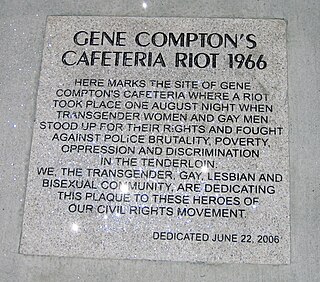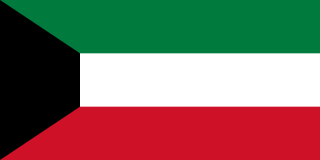
Port Said is a city that lies in northeast Egypt extending about 30 km (19 mi) along the coast of the Mediterranean Sea, straddling the west bank of the northern mouth of the Suez Canal. It forms the majority of the Port Said governorate, where its seven districts comprise seven of the governorate's eight regions. The city was established in 1859 during the building of the Suez Canal, and at the beginning of 2023 had a population of 680,375 people.

Maadi is a leafy and once suburban district in the Southern Area of Cairo, Egypt, on the east bank of the Nile about 12 kilometers (7.5 mi) upriver from downtown Cairo. The modern extensions north east and east of Maadi, New Maadi and Zahraa al-Maadi are administratively part of the Basatin district.

Nørrebro is one of the 10 official districts of Copenhagen Municipality, Denmark. It is northwest of the city centre, beyond the location of the old Northern Gate (Nørreport), which, until dismantled in 1856, was near the current Nørreport station.

Broadwater Farm, often referred to simply as "The Farm", is an area in Tottenham, North London, straddling the River Moselle. The eastern half of the area is dominated by the Broadwater Farm Estate ("BWFE"), an experiment in high-density social housing, loosely based on Corbusian ideas, dominated by concrete towers connected by walkways, built in the late 1960s using cheap but fire-vulnerable pre-fabricated concrete panels. The western half of the area is taken up by Lordship Recreation Ground, one of north London's largest parks. Broadwater Farm in 2011 had a population of 4,844. The estate is owned by Haringey London Borough Council.

Old Town is the historic original town site of Albuquerque, New Mexico, for the provincial kingdom of Santa Fe de Nuevo México, established in 1706 by New Mexico governor Francisco Cuervo y Valdés. It is listed on the New Mexico State Register of Cultural Properties as the Old Albuquerque Historic District, and is protected by a special historic zoning designation by the city. However, prior to its establishment as a city in the Santa Fe de Nuevo México province, many indigenous tribes lived there including Diné, Pueblo, Apache, Tiwa, and others. The present-day district contains about ten blocks of historic adobe buildings surrounding Old Town Plaza. On the plaza's north side stands San Felipe de Neri Church, a Spanish colonial church constructed in 1793.
The Oldham riots were a brief period of violent rioting which occurred in Oldham, a town in Greater Manchester, England, in May 2001. They were ethnically-motivated riots and the worst riots in the United Kingdom since 1985.
The Mahas are a sub-group of the Nubian people located in Southern Egypt and Northern Sudan along the banks of the Nile. The Mahas have been referred to as Nubians since the creation of Lake Nasser when indigenous people of several different cultures were made to relocate. The Mahas are one of the few remaining remnants of the Qamhat Bishari tribe. Just as Ababda people are Bejan that are bilingual in Arabic and Beja,and sometimes described as Bedouins the Mahas are Bejan ethnic described as Nubian

The Compton's Cafeteria riot occurred in August 1966 in the Tenderloin district of San Francisco. The riot was a response to the violent and constant police harassment of drag queens and trans people, particularly trans women. The incident was one of the first LGBT-related riots in United States history, preceding the more famous 1969 Stonewall riots in New York City. It marked the beginning of transgender activism in San Francisco.
Armenians in the Middle East are mostly concentrated in Iran, Lebanon, Cyprus, Syria, Jordan, Saudi Arabia and Jerusalem, although well-established communities exist in Iraq, Egypt, Turkey and other countries of the area including, of course, Armenia itself. They tend to speak the western dialect of the Armenian language and the majority are adherents of the Armenian Apostolic Church, with smaller Catholic and Protestant minorities. There is a sizable Armenian population in the thousands in Israel. There is also the Armenian Quarter in Jerusalem with a history that goes back 2,000 years.

Kuwait, officially the State of Kuwait, is a country in West Asia. It is situated in the northern edge of Eastern Arabia at the tip of the Persian Gulf, bordering Iraq to the north and Saudi Arabia to the south. Kuwait also shares maritime borders with Iran. Kuwait has a coastal length of approximately 500 km (311 mi). Most of the country's population reside in the urban agglomeration of the capital and largest city Kuwait City. As of 2022, Kuwait has a population of 4.45 million people of which 1.45 million are Kuwaiti citizens while the remaining 3 million are foreign nationals from over 100 countries.

Ancient Aethiopia, first appears as a geographical term in classical documents in reference to the upper Nile region of Sudan, areas south of the Sahara, and certain areas in Asia. Its earliest mention is in the works of Homer: twice in the Iliad, and three times in the Odyssey. The Greek historian Herodotus uses the appellation to refer to such parts of sub-Saharan Africa as were then known within the inhabitable world.
The Near North Side of Omaha, Nebraska is the neighborhood immediately north of downtown. It forms the nucleus of the city's historic African-American community, and its name is often synonymous with the entire North Omaha area. Originally established immediately after Omaha was founded in 1854, the Near North Side was once confined to the area around Dodge Street and North 7th Street. Eventually, it gravitated west and north, and today it is bordered by Cuming Street on the south, 30th on the west, 16th on the east, and Locust Street to the north. Countless momentous events in Omaha's African American community happened in the Near North Side, including the 1865 establishment of the first Black church in Omaha, St. John's AME; the 1892 election of the first African American state legislator, Dr. Matthew Ricketts; the 1897 hiring of the first Black teacher in Omaha, Ms. Lucy Gamble, the 1910 Jack Johnson riots, the Omaha race riot of 1919 that almost demolished the neighborhood and many other events.
Jileeb Al-Shiyukh, often shortened to just Jilīb/Jileeb (الجليب), is one of the oldest and most congested areas in Kuwait. It is located within Farwaniya Governorate and borders Kuwait International Airport. It is largely inhabited by expatriates from countries such as India, Pakistan, Bangladesh, Sri Lanka, Egypt and Syria.
The use of urban planning in ancient Egypt is a matter of continuous debate. Because ancient sites usually survive only in fragments, and many ancient Egyptian cities have been continuously inhabited since their original forms, relatively little is actually understood about the general designs of Egyptian towns for any given period.
The Fernwood Park Race Riot was a race massacre instigated by white residents against African American residents who inhabited the Chicago Housing Authority (CHA) veterans' housing project in the Fernwood Park neighborhood in Chicago. Area residents viewed this as one of several attempts by the CHA to initiate racial integration into white communities. The riot took place between 98th and 111th streets and lasted for three days, from the day veterans and their families moved into the project, August 13th, 1947 to August 16th, 1947. The Chicago Police Department did little to stop the rioting, as was the case a year before at the Airport Homes race riots. It was one of the worst race riots in Chicago history.
On 1 February 2012, a massive riot occurred at Port Said Stadium in Port Said, Egypt, following an Egyptian Premier League football match between Al Masry and Al Ahly. Seventy-four people were killed and more than 500 were injured after thousands of Al Masry fans stormed the stadium stands and the pitch following a 3–1 victory by their club and violently attacked Ahly fans using clubs, stones, machetes, knives, bottles, and fireworks, trapping them inside the El Ahly partition of the stadium. Many of the deaths were due to police refusal to open the stadium gates, trapping the Ahly fans inside, leaving some to die, and killing others in a stampede while trying to escape. Civil unrest and severe clashes continued until 11 February, but general strikes ended on 13 February. Riots erupted in Cairo, Alexandria, and Suez. Police fired tear gas at protesters; thus, clashes erupted on the streets due to tear gas battles. Unrest calmed and ended on 13 February.
Hawally is an area in the Hawalli Governorate, located in the State of Kuwait.
Capital punishmentin Kuwait is legal. Hanging is the method of choice for civilian executions. However, shooting is a legal form of execution in certain circumstances.
The history of the Jews in Alexandria dates back to the founding of the city by Alexander the Great in 332 BCE. Jews in Alexandria played a crucial role in the political, economic, cultural and religious life of Hellenistic and Roman Alexandria, with Jews comprising about 35% of the city's population during the Roman Era. Alexandrian Jewry were the founders of Hellenistic Judaism and the first to translate the Torah from Hebrew to Koine Greek, a document known as the Septuagint.








